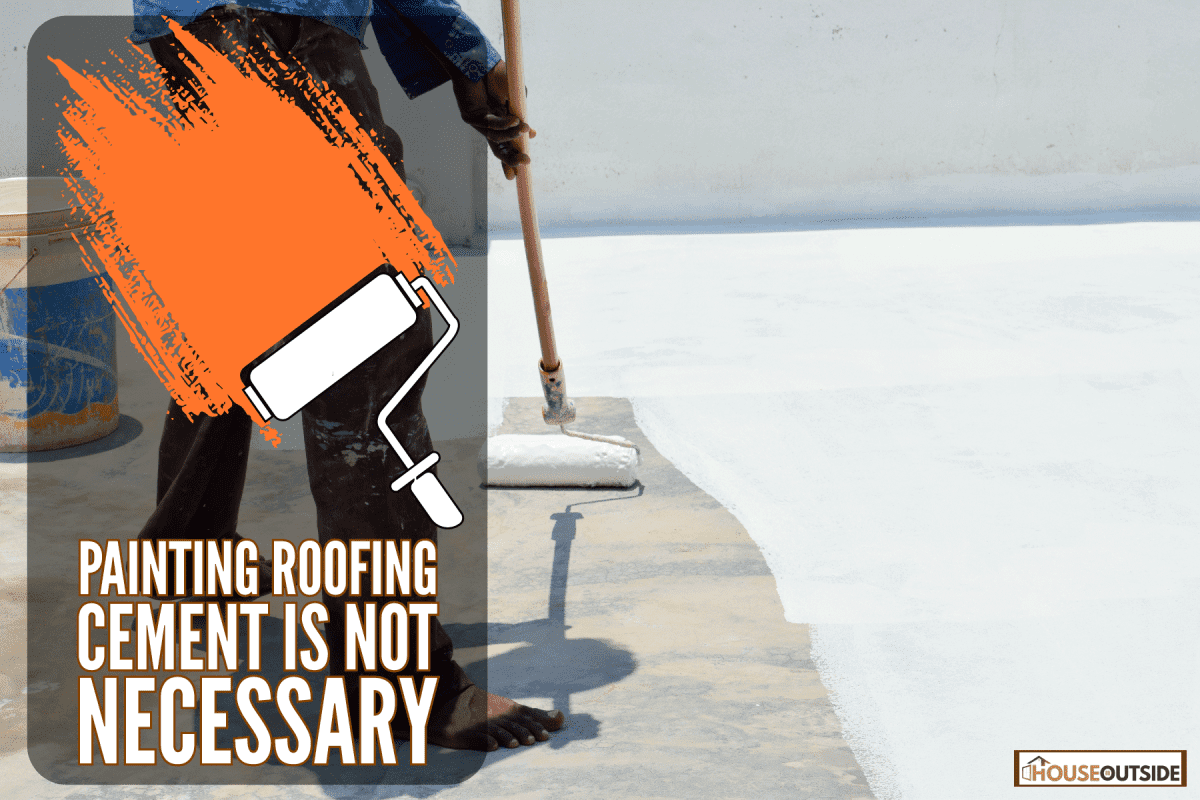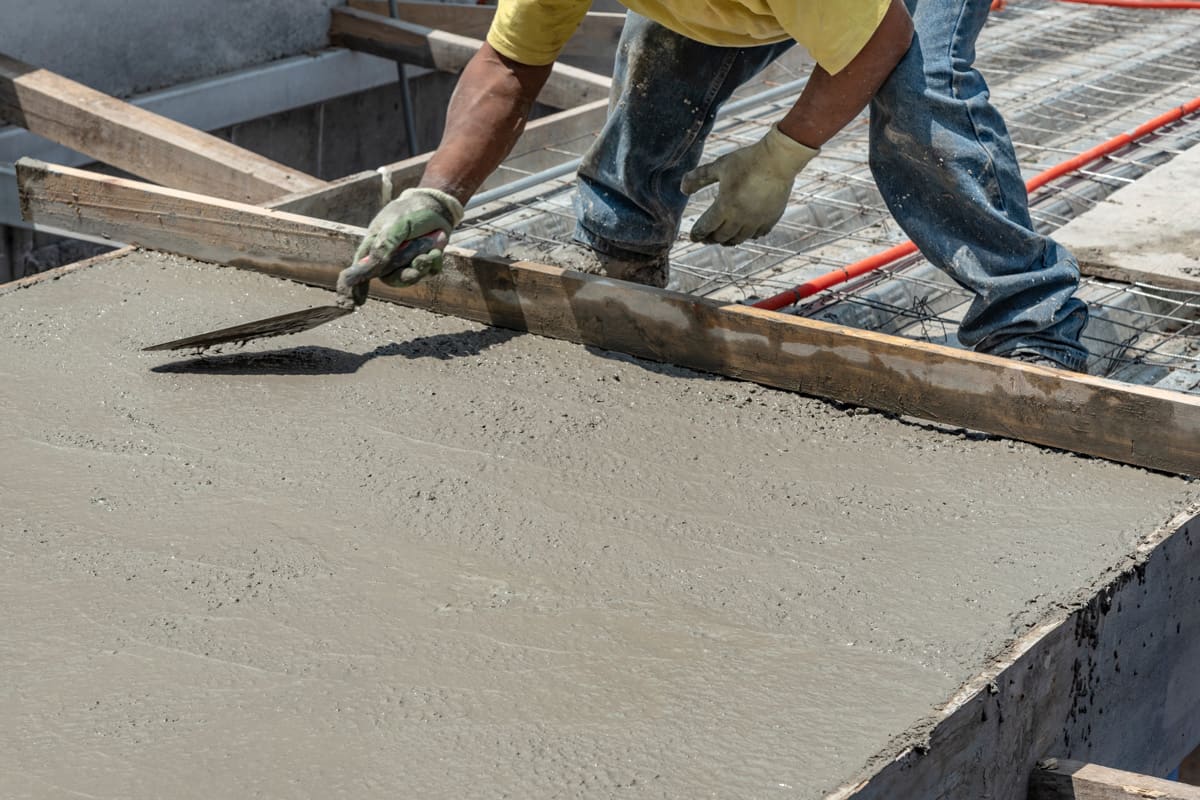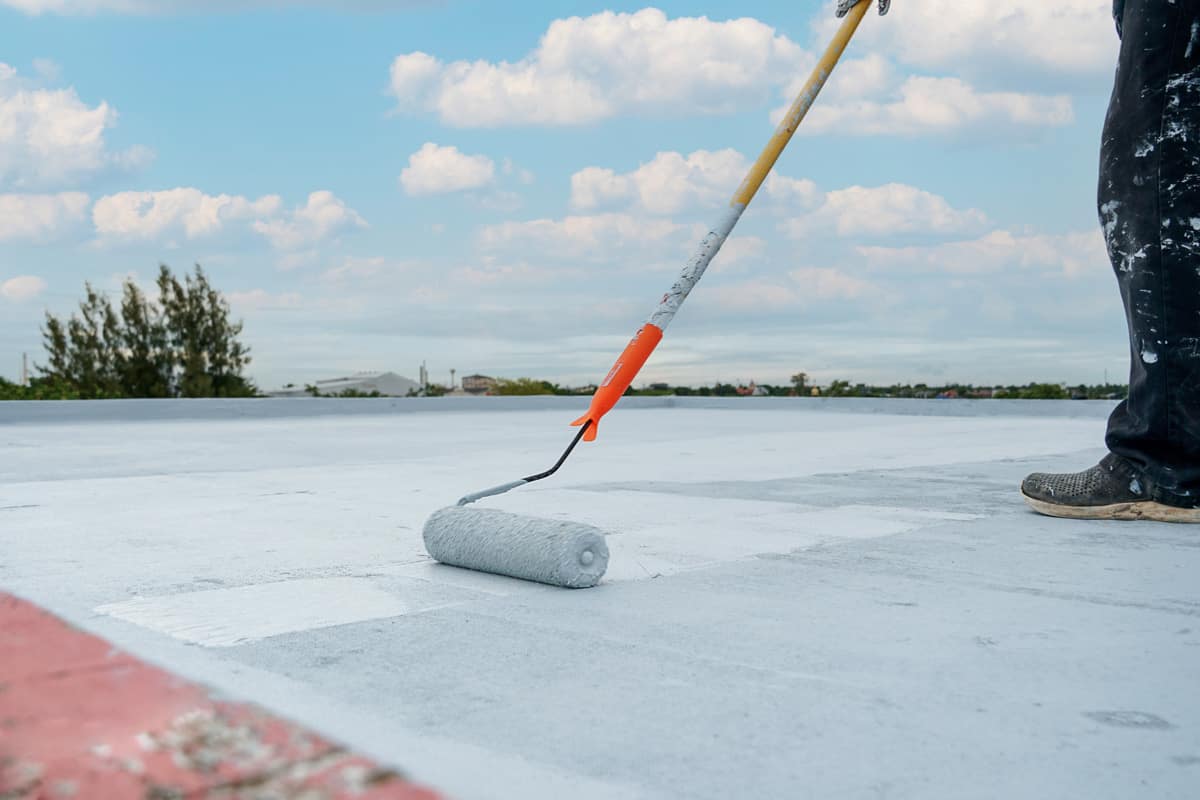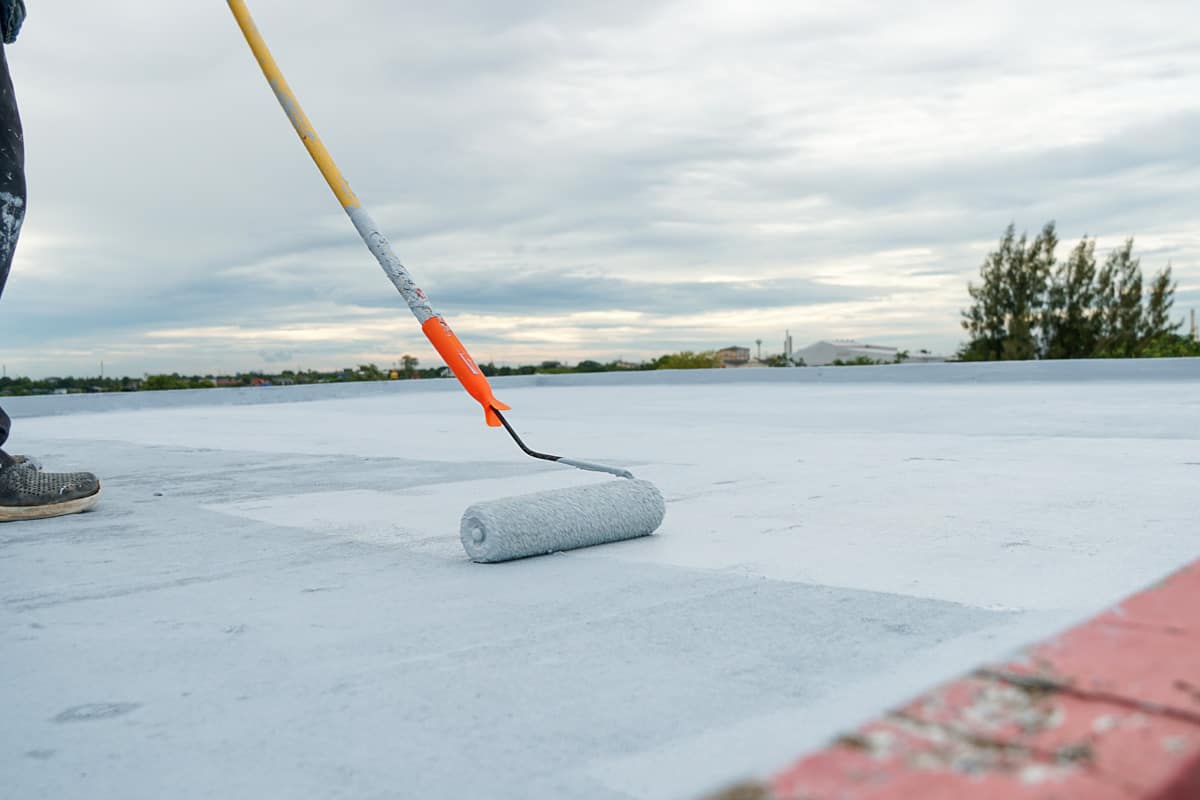Even though there is a wide variety of color options available for roofing cement, many homeowners are still not contented since some colors don't match their current roof. So, the question is, can you really paint roofing cement? We conducted thorough research since that particular matter caught our attention, too.
Painting roofing cement is not necessary. However, you certainly have the option to do so. During house renovations or when making other modifications to the overall style of the house, many homeowners opt to paint roofing cement. Doing so can give your home and roof an appearance that is more unified and attractive to the eye.
If you are curious about the process of painting roofing cement, it would be best to keep reading. Reading further might also answer some of your additional questions. Let's delve into the details!

How To Paint Roofing Cement
It is imperative to utilize the appropriate products and techniques when painting over roofing cement. It will require you to exert effort and a bit of elbow grease. The steps in painting over roofing cement include:
- Pressure wash the area, ensuring you clean it thoroughly from dirt and debris.
- Dry the area as totally as possible.
- After drying, you may now prime the area to prepare for the painting process; let it dry completely.
- Lastly, paint it with high-quality acrylic paint. And you must ensure that it is a hundred percent acrylic.

What Is Roofing Cement?
When discussing the elements that make up a roof, a few primary components will likely come to mind first. Nails, shingles, and roofing paper are generally those first three things. On the other hand, if your roof requires only a few minor fixes, you might not even require this equipment!
Every variety of roofing cement has a combination of the following:
- Mineral spirits
- Plasticizers
- Asphalt
- Reinforcing fibers
Because contractors can utilize this combination on damp and dry surfaces, they can consider this one of the essential construction materials.
When fixing damaged spots on a roof, utilizing roofing cement to do the job can significantly contribute to saving cash and time. However, there are several things that you should know before using it.
When To Use Roofing Cement

You can use roofing cement for many different kinds of repairs on your roof, some of which consist of the following but are not restricted to them:
- Repair leaks and holes in a variety of roofing materials through patching.
- Fixing the metal parts of the roof that has rust. It includes the trim or gutters.
- Preventing leaks by fastening the flashing that surrounds chimneys.
- You can fix cracks using roofing cement on concrete roofs.
- Roofing cement can help in fastening shingles that have become loose.
- You can also use it when replacing missing individual tiles.
In addition to what roofing cement can do, it can also extend the lifespan of roofs because it can prevent further damage once you use it.
Is Roofing Cement Compatible With All Roofing Materials?
A few typical varieties of roofing materials don't go well with the components that roofing cement contains. Unfortunately, the roofing cement chemicals might harm specific plastic. This includes EPDM or PVC.
Moreover, it doesn't also work well with metal roofs. So, repairing metal and plastic roofs using roofing cement will be useless.
What Is The Best Weather Condition For Applying Roofing Cement?
Roofing cement is the option that many people turn to when they need to make emergency roof repairs during storms or other climatic circumstances. This is because it works well even on damp surfaces.
However, the fact that you can utilize it successfully in adverse situations does not necessarily mean it's a good idea to do so.
It would be best not to perform roof repairs when the weather is wet. Wait for dry weather before using roofing cement. It gives the roofing cement enough time to dry completely, which results in the most durable repairs possible.
On top of the fact that roofing cement performs at its peak level during dry seasons, it is also significantly safer to undertake roof fixing in dry conditions.
Keep in mind that you should not perform fixing your roofs when there is a storm raging outside, with the exception of any urgent work that a qualified roofing firm must perform.
How Long Does Roofing Cement Take To Dry?

If the weather condition is between the average 60 and 80 degrees Fahrenheit, roofing cement will take roughly two hours to get firm. Additionally, you will need to wait 24 hours for it to completely dry and seal after.
How To Use Roofing Cement
Applying roofing cement is a straightforward process. The first step is to choose the roofing cement that would work best for your needs. After making this choice, it's time to clear up the space, so it's ready for repairs.
Once you clear the area, you must utilize a trowel or putty knife to apply roofing cement to the damaged spot. Apply the roofing cement in multiple, thin layers to ensure the best results. Each coat needs at least 12 hours to dry before it is fully set.
We highly recommend applying several applications of roofing cement to areas that need extensive repairs. You'll need more roofing materials if there is a big hole or fracture in the roof.
Using rolled roofing, fiberglass fabrics, or polyester in conjunction with the roofing cement results in a more robust and long-lasting structure.
Furthermore, even though using roofing cement to perform repairs is a simple operation, it would still be best to ask for the help of an expert. Roofing companies are well-versed in the field and have the necessary safety gear and training.
Check out this wet roof cement on Amazon.
What Roof Cement Alternatives Exist?

Using roof cement is the most efficient and time-saving method of fixing a roof. But if several spots on the roof need fixing, you may want to look into other options.
A roof replacement can be the best option if your home's current roof is old or has extensive damage. If you hire a dependable roofing firm, the result will be a lasting roof. In addition, most roofing firms offer warranties that will pay for any future roof damage.
The experts in the roofing business will be able to quickly and accurately determine the state of your roof. Once that's done, they'll know if it's best to use roofing cement to fix the roof or replace it entirely.
It is a significant financial commitment, and the roofing company you choose to deal with will significantly impact the safety of your loved ones, so it's essential to do your research before making a final decision.
In no event should you employ a roofing firm that insists on a complete roof replacement when roofing cement would suffice. A trustworthy roofer will patiently explain the problem and weigh the benefits of replacing the roof with those of repairing it using roofing cement.
What Is The Difference Between DIY And Professional Roofing Cement Application?
There is a natural tendency for homeowners to try to handle major house repairs themselves. It's acceptable to try a fix yourself sometimes.
There are a lot of house maintenance tasks that even a novice can complete successfully. Roofing, however, is not one of those places. As much as possible, avoid DIY roof repairs.
1. Structural Integrity
It would be best to ask for a roofing expert's help to do any roof repairs for a number of reasons. Your roof, in particular, is a key component of your home's overall construction. It would be best to preserve the integrity of the structure at all costs.
If you try to fix your roof yourself, you can miss a more serious problem. This can be a big issue, as it can lead to costly structural damage to your property.
It's essential to keep your family safe and sound, and the roof over their heads plays a big part in that. Even if the problem looks trivial, this is one place where you shouldn't cut corners. Put your trust in licensed roofers to ensure the safety of your loved ones and pets.
2. Investment Cost
DIY roof repair is common since it can save money compared to hiring a professional. The cost of expert roof repair is often misunderstood. Of course, exceptions exist!
The first thing you should do if your roof needs fixing is look into the warranty. It's not uncommon to see warranties on roofs that last for two decades or more after installation. Depending on the roofing firm you hired, any necessary roof repairs may be covered by this warranty.
However, it is usually a good idea to engage a roofing firm, even if it costs more money. Roofing repairs that the homeowner attempts on their own typically are time-consuming. Plus, incorrect repair procedures can exacerbate the problem.
3. Safety
Repairing a roof is, as you may expect, not without its dangers. There are a lot of potential hazards when using roofing cement to create a quick repair, despite the fact that this technique may seem harmless at first. Serious harm can result from disregarding roof safety gear and procedures.
Even while making a minor repair with roofing cement, professionals have received thorough training in how to adhere to all applicable safety regulations. They also have all the essential gear to ensure the operation goes off without a hitch.
Wrap It All Up

If you want to match the color of your roof with the roofing cement, you can always have the option to paint it. However, it would be best to do so during good weather conditions.
We hope you find this post helpful. If you want to read further, feel free to check the post below. And we are still in the process of researching house-related topics, so please watch out for more!



